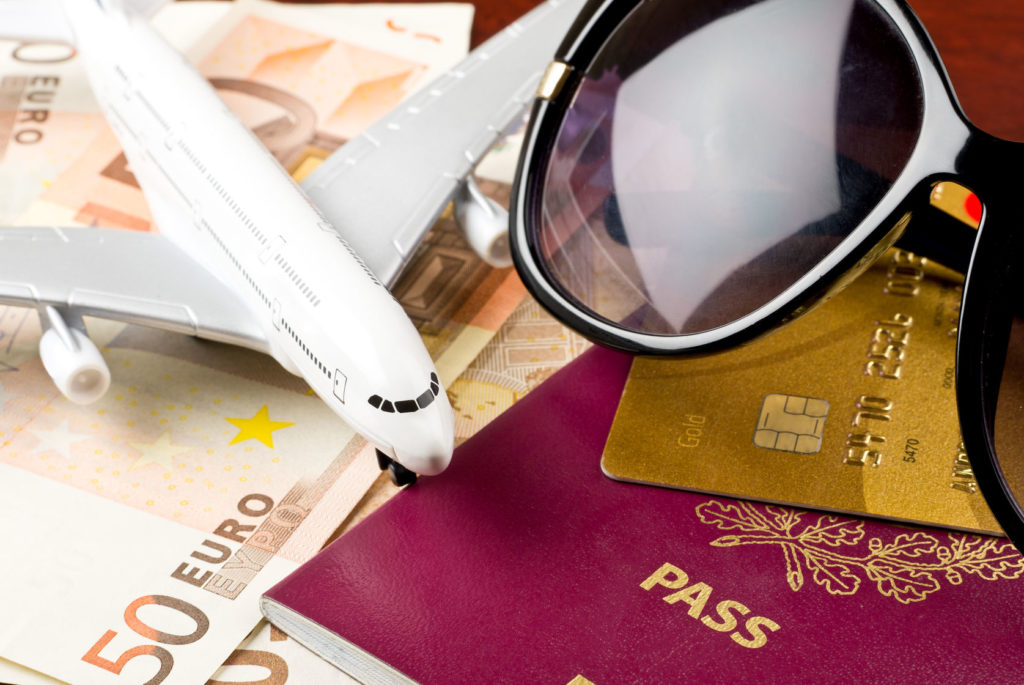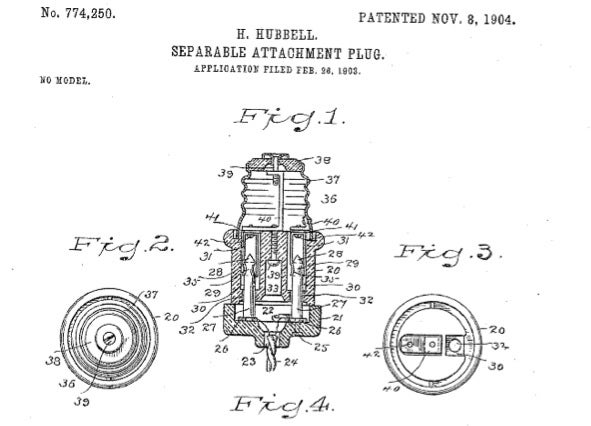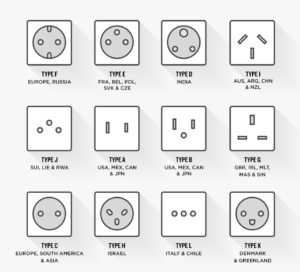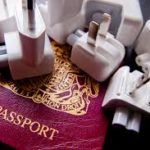
OVERSEAS POWER ADAPTERS AND PLUGS
Traveling Overseas, How Do I Plug in My Gear?
One of the primary differences between travel in the US and Canada and overseas is not the contrast in cultures: eating habits, language customs and such. No these are of concern, but one of the biggest unknowns is the method of hooking up to the odd types of electrical configurations abroad. Believe it or not, this happens to one of the biggest concerns I find from people traveling overseas for the first time: how am I going to plug in my electronic devices?
There are many different types of electrical systems throughout the world, but this article will focus on European travel market which covers the majority of overseas itineraries. Europe’s electrical system is different from ours in two ways: the voltage of the current and the shape of the plug. Although many cruise line ships abroad such as Viking Cruise Lines, and many international hotels have accommodations allowing for the most common electrical configurations, most do not. We thought it might be wise to take a few minutes to understand this subject a bit better so you are prepared for this common international traveler dilemma.
There are a few key variations in standards between countries (or sometimes even within a country):
- Current
- Voltage
- Frequency
- Outlet and Plug shape
Current
The two main standards for current are AC and DC or Alternating Current and Direct Current. In the US, we developed a standard during the famous war between Tesla and Edison. Edison favored DC, and Tesla AC. The big advantage to AC is that it was capable of traveling greater distances between power stations, and in the end, it was the standard that won out in the USA.
However, not all countries adopted AC. Neither did all yout devices. Batteries and the internal workings of many electronics also use DC power. In the case of laptops, the large external power brick is actually converting AC power to DC.
Voltage
Voltage is the force with which electricity travels. It’s often described using a water pressure analogy. Although there are several standards, the most common voltage standards for travelers are 110/120V (USA) and 220/240V (most of Europe).

Frequency
Frequency for AC power is how often the current alternates each second. In most cases, the standards are 60Hz (America) and 50Hz everywhere that values the metric system. In most cases, this isn’t going to make a difference in performance, but it can occasionally cause problems with devices that use timers.
Outlet and Plug Shapes: A, B, C, or D?
Although there are a lot of different plug shapes, most travel adapters settle for the four most common. The International Trade Administration breaks these down into alphabetical shapes (A, B, C, D and so on) so you can check to see if you need something beyond the usual four for your travels.
Get access to my blog which covers how to negotiate better rates and find insider travel deals not available elsewhere. Yes Ted, I want to see all your deals and tips!
Can You Just Use a Power Plug Adapter?
Is that all you would need? You can buy USB adapters and use your USB C cord with a USB A plug. It seems like the same concept should apply.
For many devices, it is that simple. Look at the back of your device where you find the UL listing and other information about your device. In the case of laptops, you’ll locate the information on your power adapter.
The UL listing will tell you the frequency, current, and voltage that your device can handle. If you’re traveling to a country compatible with those standards, you just need to find the right shape of plug.
Devices generally come in three types: those that only comply with one standard, dual mode devices that comply with two standards (switching between 110V and 220V), and those compatible with a wide range of standards. You may need to flip a switch or move a slider in order to convert devices with dual modes.
Do You Need an Adapter or Converter?
Now, should you want to travel with a single voltage device to a country with different voltage, you’ll need a voltage converter. If you travel someplace from a lower voltage (USA) to a higher voltage (Germany), it will be a step-up converter, and if you travel in the opposite direction, it will be a step-down converter. This is the only time you should use a converter, and remember that you don’t need to use them with your laptop. In fact, you might damage your laptop if you do.
In rare cases, you may also need an AC converter to convert DC power to AC or vice versa, but again, your laptop uses DC power already, so do not use a third-party converter with it.
Check with the company that made your laptop to see what you need. If necessary, you may also be able to buy a compatible power adapter in your destination country.
Hotels and Cruise Lines
It should be noted that many international hotels and cruise lines have built-in wiring for their guests that don’t require any special adapters or converters to use. Ask before your trip to see what your accommodations offer.
What About Tablets, Phones, and Other USB-Charging Devices?
The good news about USB-charging devices is that you don’t need a plug adapter. In fact, using one would probably ruin your charger. You just need to buy a compatible charger. USB is standardized. Your charger is doing all the work to convert the voltage to the USB charging standard to power your phone.
In fact, USB may be our best hope for standardizing our power charging for the future, between that and wireless charging systems, we may be moving toward the next “electric plug” solution for our international travel.
Although the USB standard has changed over time 1.1 to 2.0 to 3.0 and 3.1, it has done so in a thoughtful way that offers legacy compatibility. You can still plug your USB 2.0 powered device into a USB 3.0 port and charge it. You just don’t see the bandwidth and speed advantages when you do. It’s also easier to replace and upgrade USB ports over time than it is to rewire homes for new electrical standards.
Why do Countries Have Different Shaped Power Outlets?
After a system of power transmission was established (AC vs DC), homes were wired for electricity, but there was no such thing as a power outlet. There wasn’t a good way to patch something into the network temporarily. Devices were wired into the home’s electrical network directly. We still do this with some appliances, like light fixtures and oven hoods, but at the time, it meant there was no such thing as a portable electronic device.
As countries built out electrical systems, there wasn’t need to think about compatibility. It was a wonder that power even standardized between cities and states within a single country. (Actually, that didn’t always happen within countries. Brazil still has incompatible systems within portions of the country according to the International Trade Administration.)
Read My Blog HOW TO AVOID ADDED CURRENCY FEES WHEN TRAVELING ABROAD for more international travel insight.
That also meant different countries settled around different voltages and frequencies as power plants were built. Tesla recommended 60 Hz in the US, while Europeans went with the more metrically-compatible 50 Hz. The US went to 120 volts, while Germany settled on 240/400, a standard later adopted by other Europeans.
As electric lights began to replace the gas fixtures found in most homes, on August 11, 1896, Bridgeport inventor and industrialist HarveyHubbell sought to provide a simple, safe, and cost-effective pull-socket. Today we walk into a room and hit a switch on the wall to control our lights, but during the late 19th century gas fixtures were controlled individually and normally found in the center of a room’s ceiling or high up on a wall.
ENTER TED’S MIAMI VACATION GIVEAWAY!
Sign Up Here and Win a 3-night MIAMI VACATION for two from
The Kimpton Epic Miami!

That also meant different countries settled around different voltages and frequencies as power plants were built. Tesla recommended 60 Hz in the US, while Europeans went with the more metrically-compatible 50 Hz. The US went to 120 volts, while Germany settled on 240/400, a standard later adopted by other Europeans.
As electric lights began to replace the gas fixtures found in most homes, on August 11, 1896, Bridgeport inventor and industrialist HarveyHubbell sought to provide a simple, safe, and cost-effective pull-socket. Today we walk into a room and hit a switch on the wall to control our lights, but during the late 19th century gas fixtures were controlled individually and normally found in the center of a room’s ceiling or high up on a wall.
When electric fixtures replaced these it was costly to install the separate wires, circuits, and switches required to operate them individually, so people often left lights on even when they were not needed. Hubbell’s solution provided the circuit and switch as part of the socket which could be manipulated by simply pulling a cord.


Plugs, Plugs and More Plugs!
Meanwhile, other countries began developing outlets and plugs without considering compatibility, although it was the outlet that made portable electronics possible. It was just a matter of which standard gained traction in each location. Most country systems also adapted a system that made it only possible to plug your devices in one way, whether it was by making the plugs different shapes, making three of them, or putting them at different angles.
Your Vacation Is Not a Dress Rehearsal, Get Ted’s Expert Travel Protection Advice! Call Ted at 954-290-8626 and sign up here to Get Our Free No-Obligation Travel Protection Quote

The plug differences are bridged by carrying an assortment of converters or an all-in-one gadget which has them all. Currently, there are 15 different types of electrical outlets in use around the world today, each identified by a letter of the alphabet, A through O. However you don’t need more than a handful of adapters for common international travel.

How to Convert From One Type of Power Source to Another?
We recommend that you carry the main separate adapters, the universal all-in-one adapters will be too heavy and bulky to remain in the socket. We find that an assortment of the most common adapters will do fine. And as some of these multi-use units can run over $75 apiece, and as any traveler has experienced, can be forgotten and left behind, there is no reason to shell out so much for this device.
We recommend the Ceptics Adapter Plug Set for World Wide International Travel Use sold on Amazon. It is very inexpensive and simple to use.
In addition buy a the Belkin 3-Outlet SurgePlus Mini Travel Swivel Charger Surge Protector with Dual USB Ports (2.1 AMP / 10 Watt) to protect your gear. Make sure you plug in the adapter and surge protector up first, THEN plug your devices into the surge protector.
These two simple pieces of gear should be all you need for foreign travel.
Remember these are not power adapters, if you need something to convert 110 to 240 the consider the
BESTEK Travel Adapter 220V to 110V Voltage Converter with 6A 4 USB Ports and UK/AU/US/EU Plug Adapter

Click here for Ted’s travel benefits
email tedkarbo@gmail.com
or call 954-290-8626




